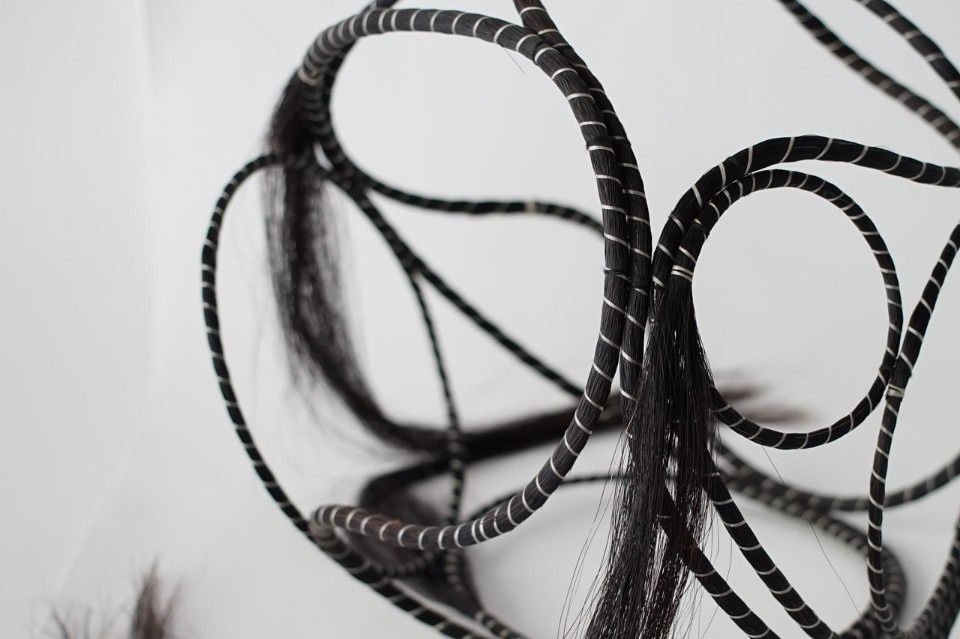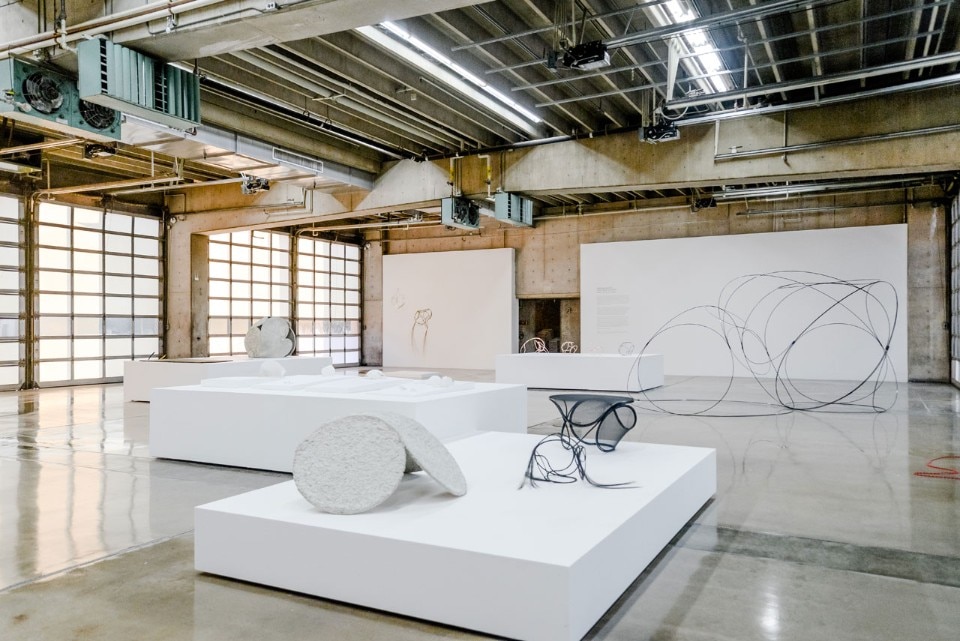
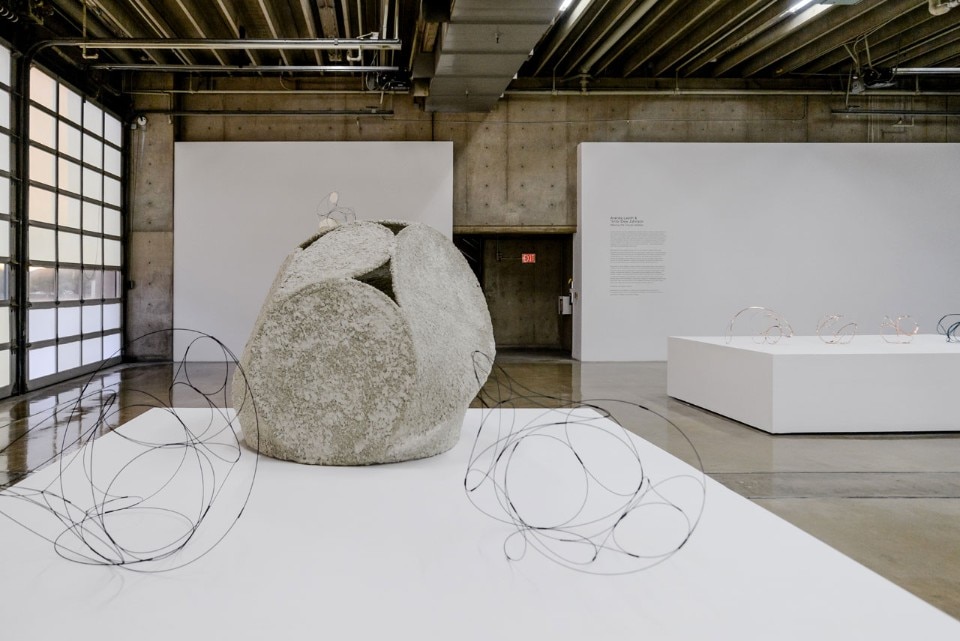
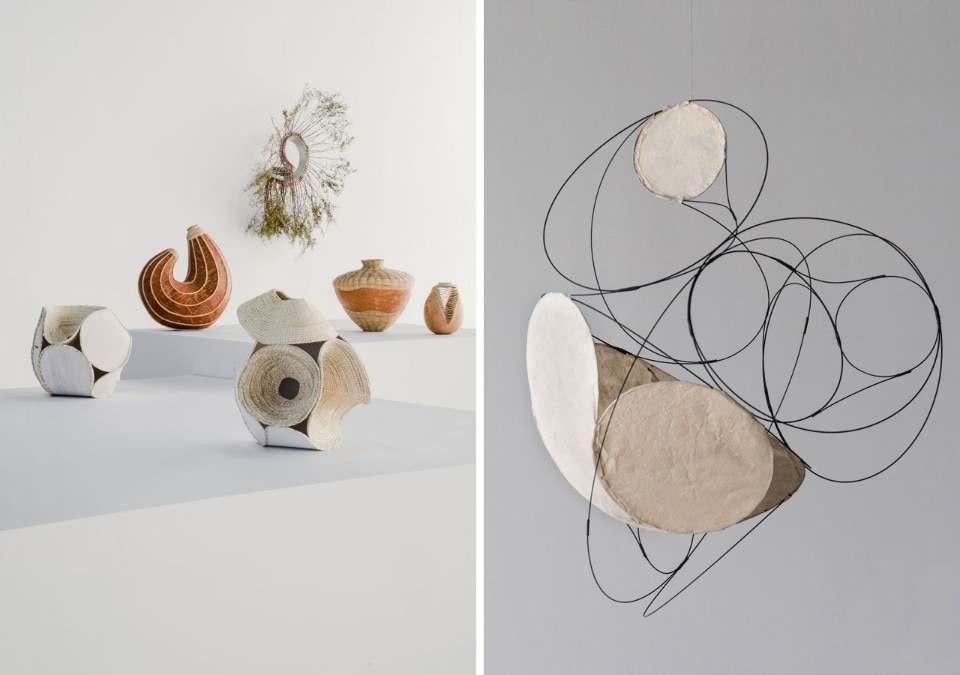
Maria Cristina Didero: How did this project started?
Aranda\Lasch: We have been researching Native American baskets for some time. Our first gallery show was in 2006 at Artists Space in New York, at the invitation of curator Christian Rattemeyer. Chris Lasch had just been to the National Museum of the American Indian and saw seen one of Terrol Dew Johnson’s baskets. Inspired, he reached out to Terrol to see if he would collaborate on the Artists Space show together – it happened that Chris’ wife Molly McKnight knew happened to know someone who knew someone who was working with Terrol on a Native Foods cookbook.We called it Rules of Exchange and made of bunch of experimental baskets that combined our interest in rule-based systems with Terrol’s material practice. The Museum of Modern Art eventually acquired those original baskets because they saw them as an early combination of craft and technology. Fast forward ten years and we were invited to have our first solo museum show and we once again asked Terrol to make some more baskets together.
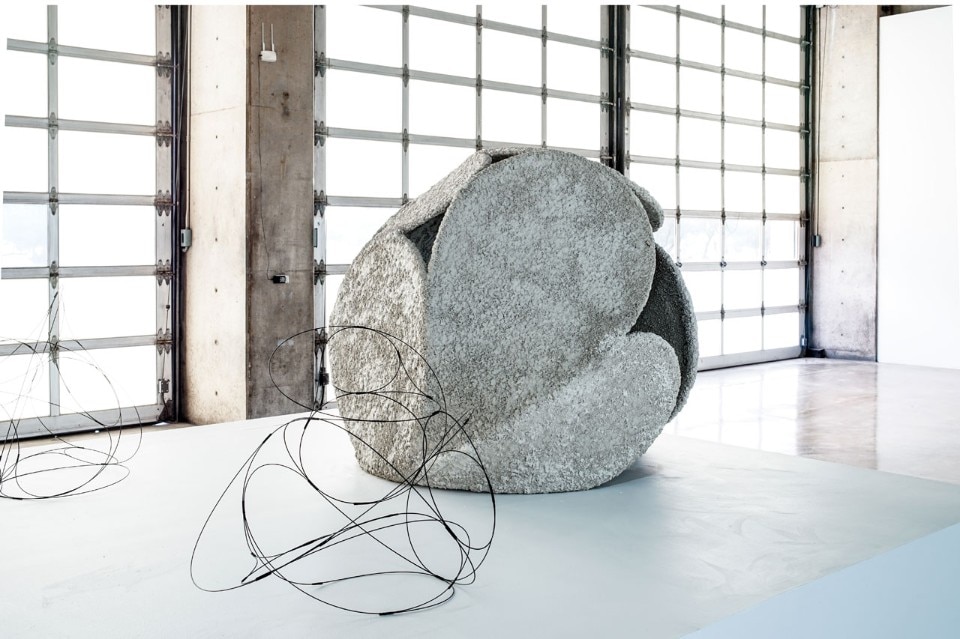
Maria Cristina Didero: I like the idea that this exhibition involves a cross- cultural collaboration: w. What is the message you want to pass convey with this project and how did you developed the work together with Terrol Dew Johnson?
Aranda\Lasch: Terrol Dew Johnson came up with the title, explained in his own words: “Traditionally, the Tohono O’Odham O’odham use long picking-sticks made of the inner ribs of the towering saguaro cactus to harvest the same cactus’ ruby-red fruit. Reaching up into the sky, the kuipad (a tool made of natural materials), would ‘pull down the clouds’ and help bring rain to the arid Sonoran Desert. This intersection between the People of the Desert and the clouds was mediated by the kuipad. In “Meeting the Clouds Halfway” we explore the intersection between people and Nature, the natural fibres of the desert and modern manmade materials created by people. These creations are a combination of the old ways and new visions. Together, they are meeting the clouds halfway.”
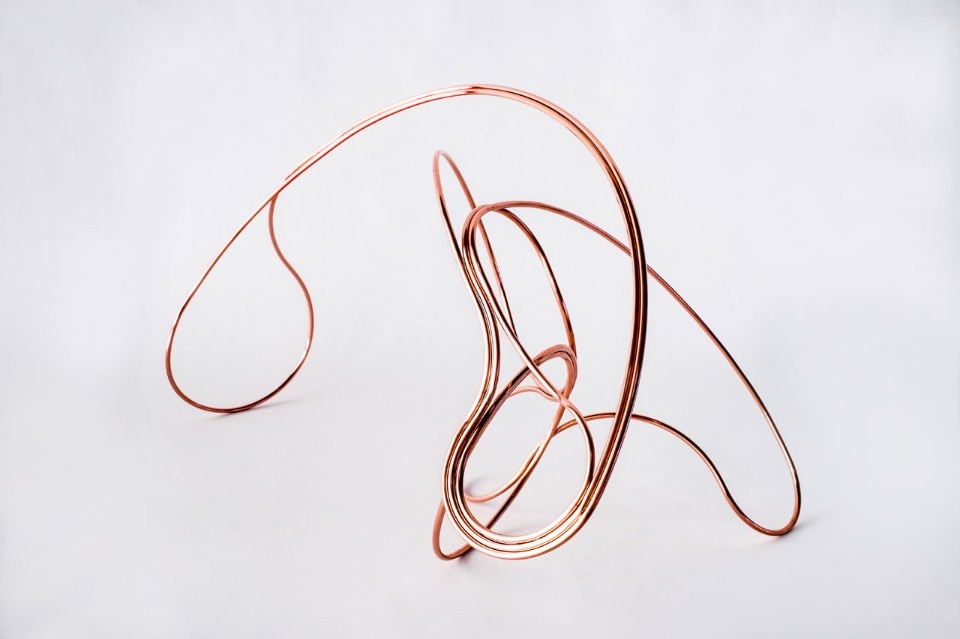
Maria Cristina Didero: You say this is the result of a long-term study of the subject. Could you tell us an anecdote about this research?
Aranda\Lasch: Our watershed moment in this project was ten years ago when we asked Terrol what defines a basket. He answered that a basket is something that holds a conversation. The practice of creating baskets is inherently social, an activity that produces opportunities for dialogue among the people making them, he said. He also thought that some baskets were in conversation with others because they shared attributes and materials. We are inspired by these definitions. To Terrol, the baskets are about the relationships around the object, more than the object itself. This allows us to open up the idea of what a basket can be. It also opens up our idea of what architecture could be. That was ten years ago and we still think the same way about that exchange.
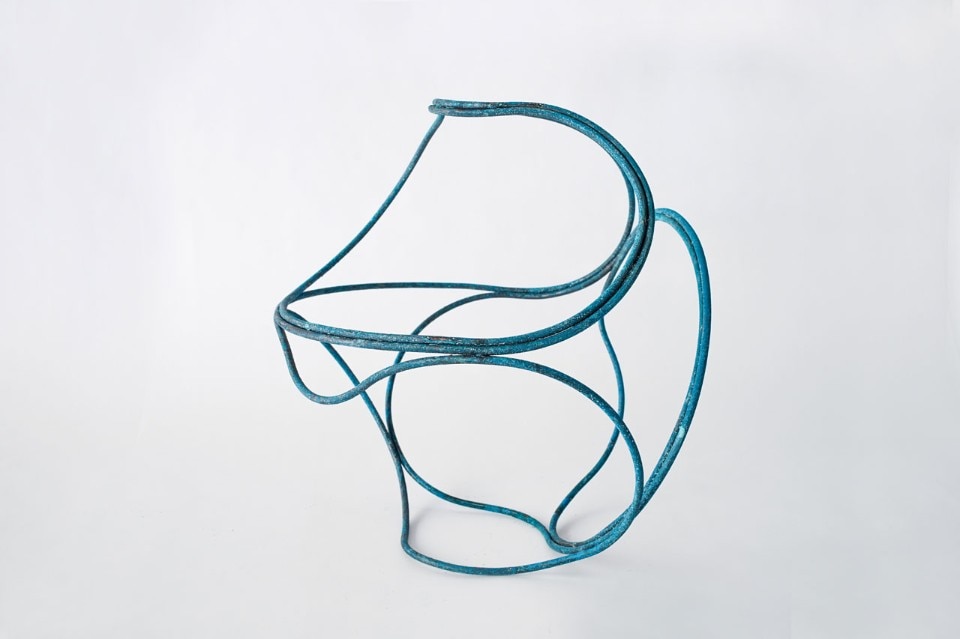
Maria Cristina Didero: How does contemporary design blend with native craftsmanship in this show?
Aranda\Lasch: The traditional weaving technique of the Tohono O’odham tribe is coiling and their baskets are modest in expression compared to other fibre arts. Their colours form an earthy palette derived from natural materials. The patterns are generated from the coiling process itself and the shape of the baskets are abstract profiles of desert plants. Nothing is imposed; it’s all intrinsic to the process, as if the desert is given new life in the weaver’s hands.
Maria Cristina Didero: The coil is crucial…
Aranda\Lasch: The coil is the key to understanding our show. The act of coiling starts with one central point around which a material is wound, spiralling outwards and upwards in concentric circles until a structure is created. We decided early on to coil three-dimensionally so that, rather than ending up with surfaces, we would make more open structures. We built jigs as space-frames that send the coil into space and back to itself. Many works in the show are built around this three-dimensional coil, a both practical and symbolic form. For the Tohono O’odham, baskets employ coiling as a structural strategy to create a functional object but also as a ritual which connects the maker to the community, their elders and the desert.
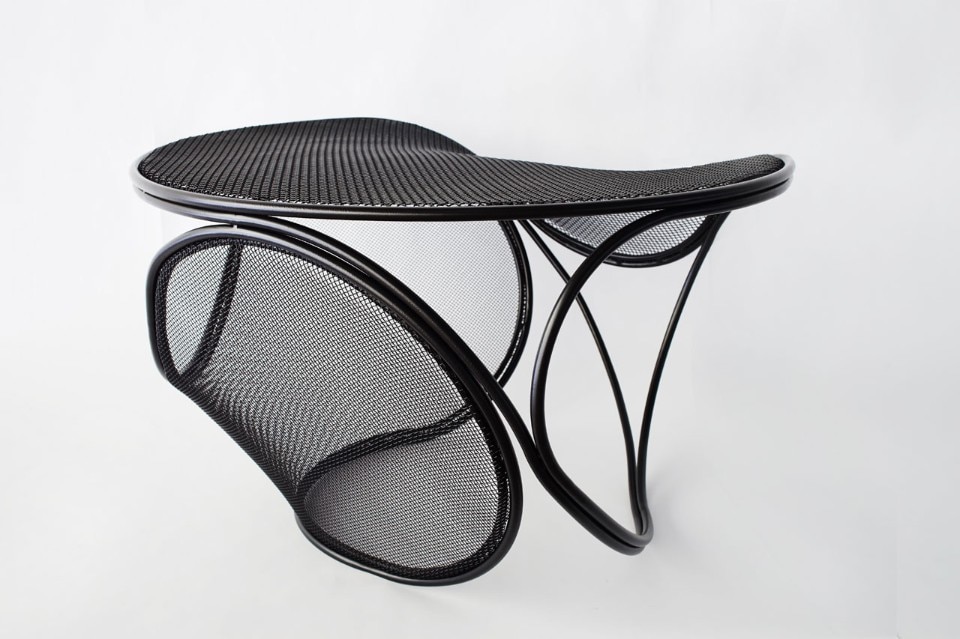
Maria Cristina Didero: Could you tell us something about the installation in the venue. How will the objects be displayed there?
Aranda\Lasch: The museum itself is a notable example of ecologically sensitive desert architecture. The exhibition will take place in the main gallery of a neo-brutalist building, formerly a fire station with passive solar positioning and a poured concrete frame that creates a high thermal mass. It’s also non-air-conditioned. It’s an apt setting for the work and a conversation about long-term solutions for building in the desert. We wanted to showcase how native communities express the desert through material and practice so the show is organized around the desert materials: rock, copper, wood and grass.
Maria Cristina Didero: I like the connection between “functional” and “ritual”. How did you reflect this in the show?
ArandaLasch: Ritual is often taken to be a profound or spiritual activity but it can be quite mundane, too. Your coffee in the morning or a walk around the block; these are habits that resonate in your life and can be elevated to ritual through iteration. We’re interested in this idea of meaningful repetition and how to organise around it. Architects like to use programmes as a way to synthesise form but we prefer ritual because it describes human occupation in a way that is coded but not generic or over-determined. Ritual is always specific. More broadly, our studio is interested in the relationship between rule-based systems for design and their interplay with human ritual. At its core, this exhibition shows the artefacts the Sonoran Desert creates through ritual and how, through this lens, this desert is a progenitor of rich material practices that continue to evolve. In the words of Jocko Weyland, MOCA’s chief curator, “Meeting the Clouds Halfway is the culmination of ArandaLasch and Terrol Dew Johnson’s long-term engagement with the local Tohono O’odham community.
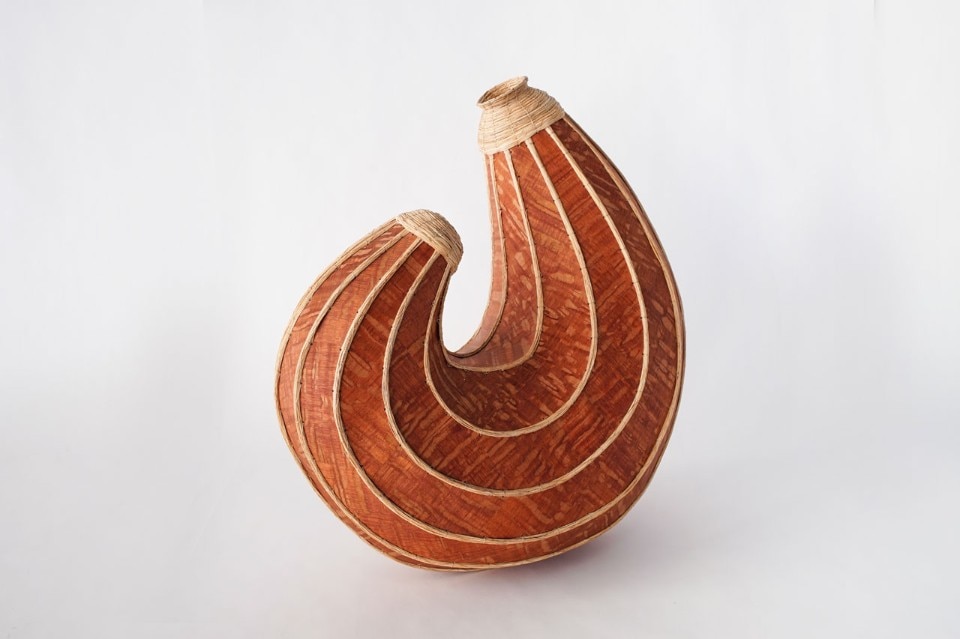
Maria Cristina Didero: I believe the title is really poetic. How did you decide on it and what is its message?
Aranda\Lasch: Terrol Dew Johnson came up with the title, explained in his own words: “Traditionally, the Tohono O’odham use long picking-sticks made of the inner ribs of the towering saguaro cactus to harvest the same cactus’ ruby-red fruit. Reaching up into the sky, the kuipad (a tool made of natural materials), would ‘pull down the clouds’ and help bring rain to the arid Sonoran Desert. This intersection between the People of the Desert and the clouds was mediated by the kuipad. In “Meeting the Clouds Halfway” we explore the intersection between people and Nature, the natural fibres of the desert and modern manmade materials. These creations are a combination of the old ways and new visions. Together, they are meeting the clouds halfway.”
Maria Cristina Didero: In your opinion, what is the Native American situation at the moment?
Aranda\Lasch: Native communities like the Tohono O’odham certainly face challenges. They lack access to things the rest of us take for granted but they also create shining talents like Terrol Dew Johnson, whose artistic output and activism create an awareness of their rich culture as well as the challenging social issues they face. Basket-weaving is one part of Terrol’s wider practice that integrates creativity, community organisation and health and cultural education. As an example, he goes on walks in the desert to find materials for his baskets which is part of the weaver’s foraging tradition. Extending this tradition, Terrol actually walked from Maine to Arizona in 2009 as part of “The Walk Home: A Journey to Native Wellness,” to bring awareness to the diabetes crisis in Native communities; he also runs a grassroots community organisation called Tohono O’odham Community Action (TOCA), dedicated to creating programmes based in the O’odham Himdag, the Desert People’s Way.
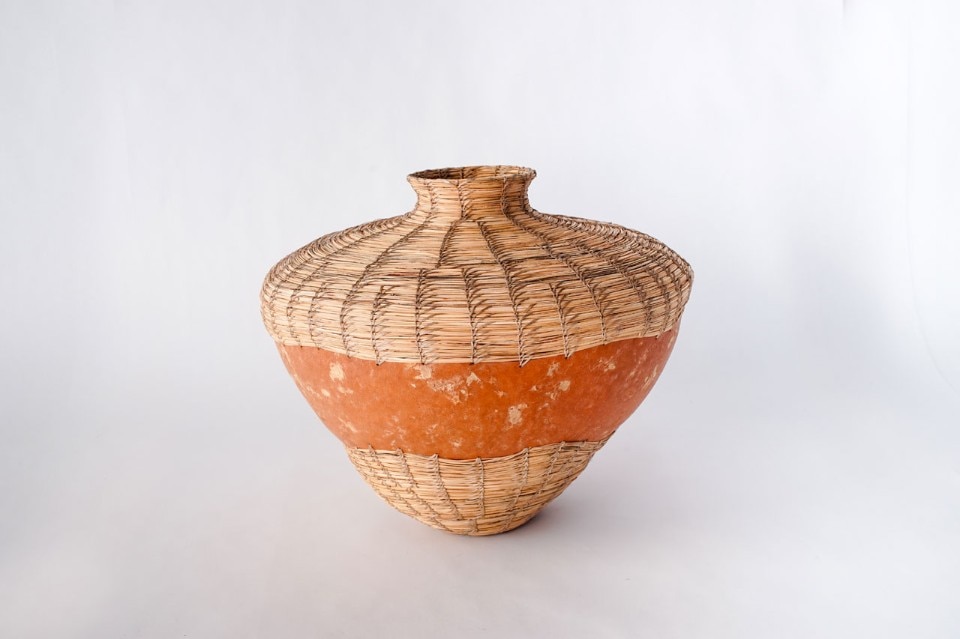
Maria Cristina Didero: What is your reaction to all this?
Aranda\Lasch: As architects, we are inspired by all this, how to conjure something up from the desert, how to hold onto tradition from one generation to the next but still invent and how to demand beauty from a demanding context.
Maria Cristina Didero: It looks as if the show will include small pieces of architecture, furniture and a book…
Aranda\Lasch: During the exhibition, we will issue a new book of our work called Trace Elements. It is being published by Columbia Books on Architecture and the City.
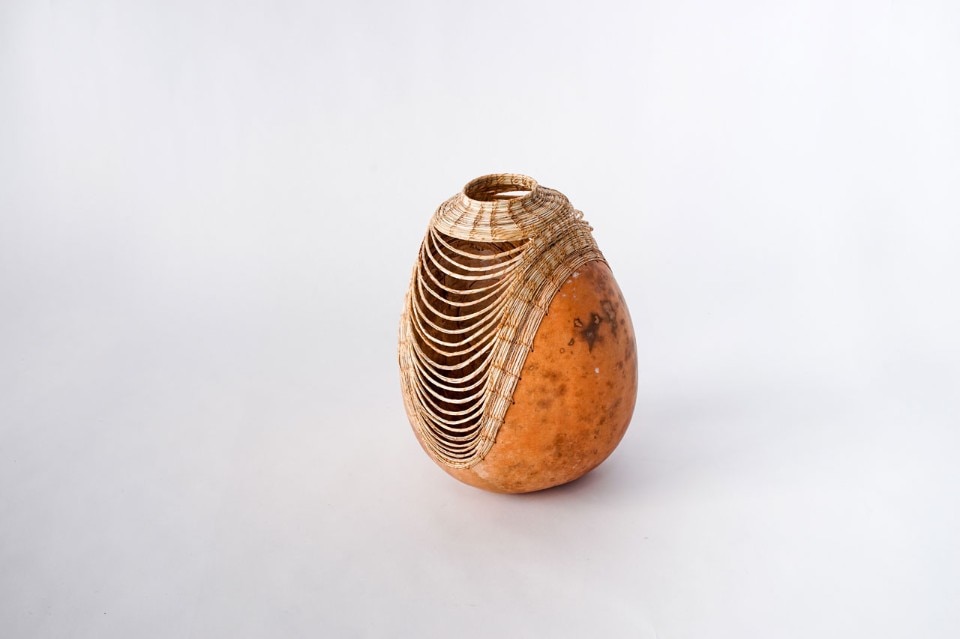
Maria Cristina Didero: I like the connection between “functional” and “ritual”. How did you reflect this in the show?
Aranda\Lasch: Ritual is often taken to be a profound or spiritual activity but it can be quite mundane, too. Your coffee in the morning or a walk around the block; these are habits that resonate in your life and can be elevated to ritual through iteration. We’re interested in this idea of meaningful repetition and how to organise around it. Architects like to use programmes as a way to synthesise form but we prefer ritual because it describes human occupation in a way that is coded but not generic or over-determined. Ritual is always specific. More broadly, our studio is interested in the relationship between rule-based systems for design and their interplay with human ritual. At its core, this exhibition shows the artefacts the Sonoran Desert creates through ritual and how, through this lens, this desert is a progenitor of rich material practices that continue to evolve. In the words of Jocko Weyland, MOCA’s chief curator, “Meeting the Clouds Halfway is the culmination of ArandaLasch and Terrol Dew Johnson’s long-term engagement with the local Tohono O’odham community.
until 29 January 2017
Aranda\Lasch and Terrol Dew Johnson: Meeting the Clouds Halfway
MOCA Tucson
265 South Church Avenue, Tucson
Curatore: Alexandra Cunningham Cameron


